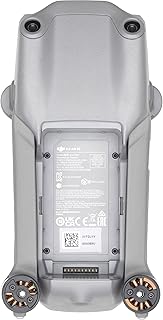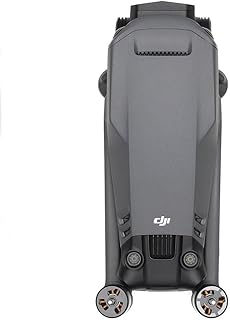The Future of Drone Technology: An In-Depth Look at RotorLogic
While the term "RotorLogic" doesn't directly refer to a specific company or technology, it represents a fascinating concept in the world of drone technology. It highlights the critical role of advanced software algorithms and control systems in propelling the future of drones.
Here's a deeper dive into the implications of this concept:
What is RotorLogic?
RotorLogic is a metaphorical term encompassing the intelligent software and algorithms that enable complex drone operations. It encompasses:
* Advanced flight control systems: These systems provide real-time control and stability for drones, allowing them to navigate challenging environments and execute precise maneuvers.
* Autonomous navigation: RotorLogic enables drones to navigate without human intervention, using sensors and AI to plan routes, avoid obstacles, and adapt to changing conditions.
* Data processing and analysis: Drones equipped with RotorLogic can collect and analyze vast amounts of data, using machine learning to identify patterns, optimize flight paths, and make informed decisions.
* Human-machine interaction: RotorLogic facilitates seamless communication between humans and drones, allowing operators to control, monitor, and manage drone fleets efficiently.
Why is RotorLogic important for the future of drones?
RotorLogic is crucial for unlocking the full potential of drones across various sectors:
* Increased safety and efficiency: Advanced algorithms enhance stability and prevent accidents, while autonomous flight reduces human error and increases operational efficiency.
* New applications and possibilities: By enabling complex maneuvers and autonomous operation, RotorLogic unlocks new possibilities for drone usage in sectors like delivery, inspection, security, and search and rescue.
* Data-driven decision making: RotorLogic empowers drones to gather valuable data and provide insights that can improve efficiency, optimize processes, and facilitate informed decision making.
* Enhanced performance and reliability: RotorLogic enables drones to operate in more challenging environments and conditions, increasing their performance and reliability.
Examples of RotorLogic in action:
* Amazon Prime Air: Their drones utilize complex algorithms to navigate urban environments and deliver packages safely and efficiently.
* Google's Project Wing: These drones are designed for autonomous package delivery, leveraging advanced navigation systems and AI to optimize routes and avoid obstacles.
* DJI's Mavic series: These consumer-grade drones utilize powerful software algorithms for intelligent flight modes, automatic obstacle avoidance, and stabilized video recording.
Looking forward:
The future of RotorLogic is incredibly exciting. As technology continues to advance, we can expect to see:
* Further integration with AI and machine learning: This will lead to more intelligent drones with greater autonomy and decision-making capabilities.
* Improved sensor technology: More advanced sensors will provide drones with a richer understanding of their environment, allowing them to operate with greater precision and safety.
* Advanced communication systems: New communication technologies will enable drones to share data and coordinate with each other, facilitating complex multi-drone operations.
Conclusion:
RotorLogic represents the software revolution driving the future of drones. By enabling intelligent flight, autonomous navigation, and data-driven decision making, RotorLogic unlocks new possibilities for drone technology and its impact on various industries. As technology continues to evolve, we can expect to see even more innovative applications of RotorLogic, shaping the future of our world.


